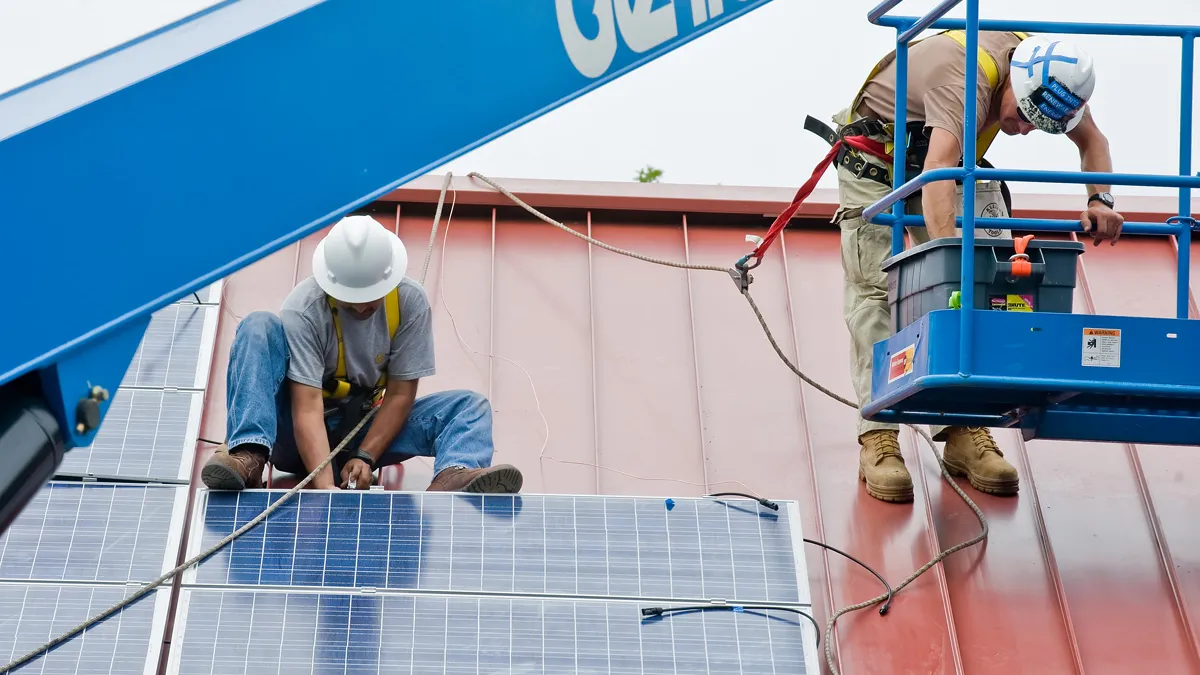Dive Brief:
- The Internal Revenue Service (IRS) issued guidance on Friday, establishing that solar developers who invest at least 5% of the total expected installation cost of a project by the end of 2019 will qualify for a 30% investment tax credit (ITC).
- The 2015 law that established the credit did not specifically define what qualifies as beginning construction on a project, to the consternation of the solar industry. The new guidance specifies that developers have four years to begin a project to qualify for the ITC, which then begins to wind down from 30% to 10% based on the construction and service dates of the project.
- The notice also specifies the deadlines and qualifications for other types of energy properties that qualify for a tax incentive, including small wind projects, fuel cell power plants, geothermal heat pumps and more.
Dive Insight:
"With this notice, IRS sent a strong signal to investors while giving developers clear criteria on par with other renewable technologies," Liam Donovan, a principal at the law firm Bracewell LLP, told Utility Dive via email.
The guidance has been received favorably as it assures the entire solar supply chain, according to Dan Whitten, vice president of communications at the Solar Energy Industries Association (SEIA).
"If you're making manufacturing plans, now you know what the policy's going to be going forward. The developers are now cleared up on this," Whitten told Utility Dive.
Developers breaking ground or making the 5% investment in the installation by 2020 have until the end of 2023 to bring the project online in order to qualify for the highest tax incentive (30% ITC).
According to a Credit Suisse Group AG analyst note, this is particularly useful for developers that are affected by the solar tariffs imposed by the Trump administration, intended to stimulate domestic solar manufacturing.
"The news is positive for utility scale solar developers who can now avoid solar tariffs imposed on imports through 2021, procure a majority of their solar panels in later years, and still qualify for the higher tax credits," analysts at Credit Suisse Group AG wrote, according to Bloomberg.
| Date Solar Project Construction Begins | Placed in Service Date | Investment Tax Credit |
|---|---|---|
| Before 1/1/2020 | Before 1/1/2024 | 30% |
| 1/1/2020 — 12/31/2020 | Before 1/1/2024 | 26% |
| 1/1/2021 — 12/31/2021 | Before 1/1/2024 | 22% |
| Before 1/1/2022 | On or after 1/1/2024 | 10% |
| Before 1/1/2022 | Any | 10% |
SOURCE: IRS Notice 2018-59
There are too many factors to estimate if the uncertainty of the guidance led to curtailment of solar development, Whitten said.
"In the absence of this commence construction guidance, tax equity partners were growing cautious about project risk," SEIA CEO Abigail Ross Hopper, said in a statement.
In March, the IRS released a private letter ruling that a residential energy storage facility may qualify for the 30% solar ITC if it is charged completely by an onsite solar array. The ruling only applied to the undisclosed case addressed in the private letter, but it indicated the agency's views on residential storage eligibility for the credit.















